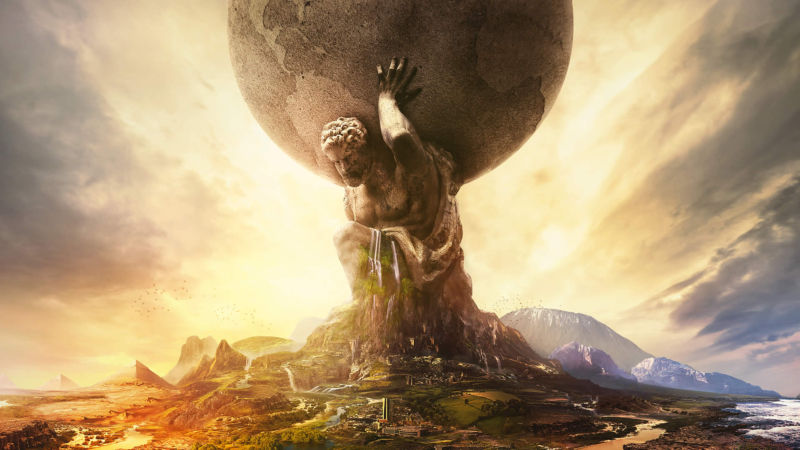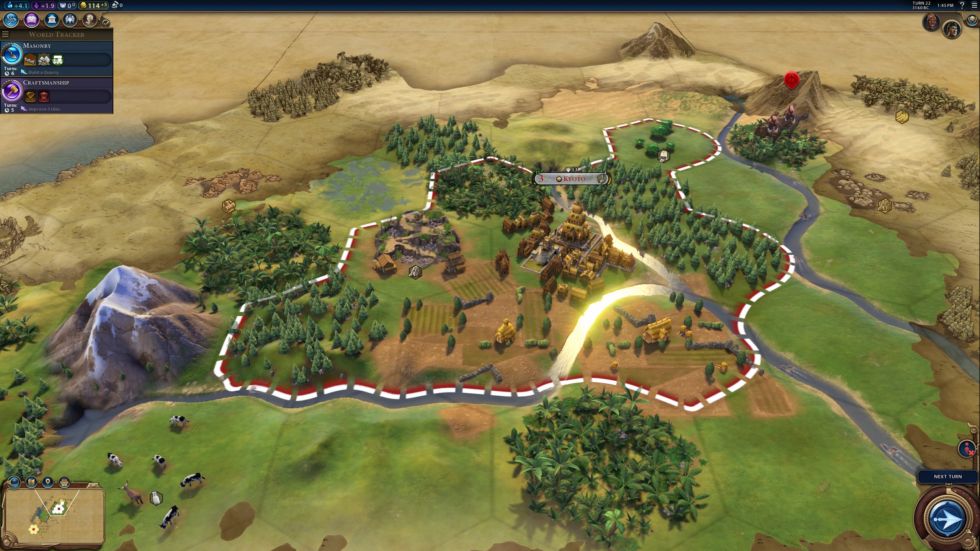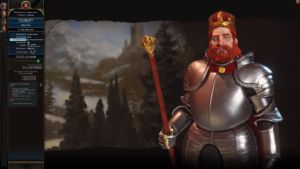
This year marks the 25th anniversary of Sid Meier’s Civilization. It’s an important milestone for a series that has shaped the strategy genre in countless ways over the last quarter-century. The release of Civilization VI is the next big step, and after 2014’s good-but-not-outstanding Civilization: Beyond Earth, which felt more like a spinoff than a sequel, expectations are high.
The good news is that in the 15 hours and several hundred turns I've poured into a pre-release version of the game—which features all of the structural and mechanical features from the retail release, half of the game’s 20 distinct civilisations, a comprehensive list of different map types, three map sizes, and two game speeds—Civ VI is already very good indeed. It might even be the most in-depth Civilization game to date.
Sure is purdy
Of course, the most recognisable change is the art style. While Civ VI retains the functional hex-grid structure introduced by Civ V, developer Firaxis has dropped the more realistic look, redesigning everything with brighter colours and cartoonish characters more similar to those in Civilization Revolution. The results are absolutely gorgeous, and while I’m sure the visuals will divide opinion, I’d argue Firaxis has picked the better-looking of the two aesthetic approaches. The game has a real sense of flair, and screenshots really haven’t done it justice—it looks beautiful in motion.
From snow-capped mountain ranges and sand dunes, to coastal oceans lapping against the shore and rivers that glint in the morning sun, Civ VI captures nature and makes it look breathtaking. Cities look amazing too, each of them recreated with different architectural components depending on the civilisation you play as, while there’s even a day/night cycle, which brings cities to life with twinkling lights and campfires. There were times I would just sit back and relax, looking at the individual buildings and units, zooming in up close to admire the intricacy and detail that Firaxis has poured into every single aspect of the game.
The visual design riffs off the Age of Discovery—the period of overseas exploration between the 1500 and 1800s that helped globalise the Earth. There's a real focus on cartographic imagery which influences everything on screen, with lovely flourishes like astrolabes that adorn the game’s newly refined overlay. Firaxis has even used the fog of war to further sell the period aesthetic, resulting in an ink-and-paper crosshatch effect to depict unobserved areas, and arty drawings of sea monsters and compasses to represent portions of the map you’ve not yet ventured towards. The map organically ebbs and flows like a living thing as you move around it, and seeing new stuff—whether it’s a natural wonder or a brand new civilisation—is a compelling reason to continue scouting around the world.

Even as a relatively experienced Civilization player, Civ VI already feels like it’s the deepest game in the franchise. Developed by the team behind Civilization V’s two expansions—Gods & Kings and Brave New World—Civ VI contains all of the religious and cultural features from those expansions at launch. It sets the stage for a fuller experience from day one, and the most impressive thing is that the game remains understandable and relatively accessible to newcomers. Everything is easy to grasp thanks to a better-designed user interface and a well-voiced tutorial advisor who guides you through the game’s countless different concepts and functions.
Setting up my first campaign, I did what any Civ player does when faced with a new game in the series: read. Even with only 10 of the final 20 leaders available, I still spent the best part of half an hour scrolling through the details of each one to uncover their differences, and which playstyle I liked the sound of. Much like Civilization games gone by, each leader has their own different traits, with unique buildings and special units available to them, which define them in unique ways.
From a purely presentational perspective, the leaders themselves are far more expressive this time around, with wonderfully animated leader screens that convey their personalities as humorous caricatures. I particularly loved the way Philip II of Spain is a pompous git who's precious about his religion, while Tomyris of the Scythian Empire (that’s Central Asia to you and I) is a hard-as-nails badass who hates civilisations that backstab others. Then there’s Germany’s Frederick Barbarossa (pictured below). That stern look and bushy beard aren’t just for fashion—he’s a tough leader and you don’t want to get on the wrong side of him.

After re-reading everything several times I opted for Hojo Tokimune, Shikken (or regent of the shogunate) of Japan in the 13th Century. More than anything, I liked the look of his unique samurai unit for melee combat, as well as his unique Meiji Restoration bonus, which grants extra adjacency bonuses for all my districts (more on which later). Having explored my surroundings a little, I decided to establish my first city on a river, a little way inland. Access to fresh water is vital, so setting up cities on a river or on the coast is advised. From there, I expanded out.
reader comments
168